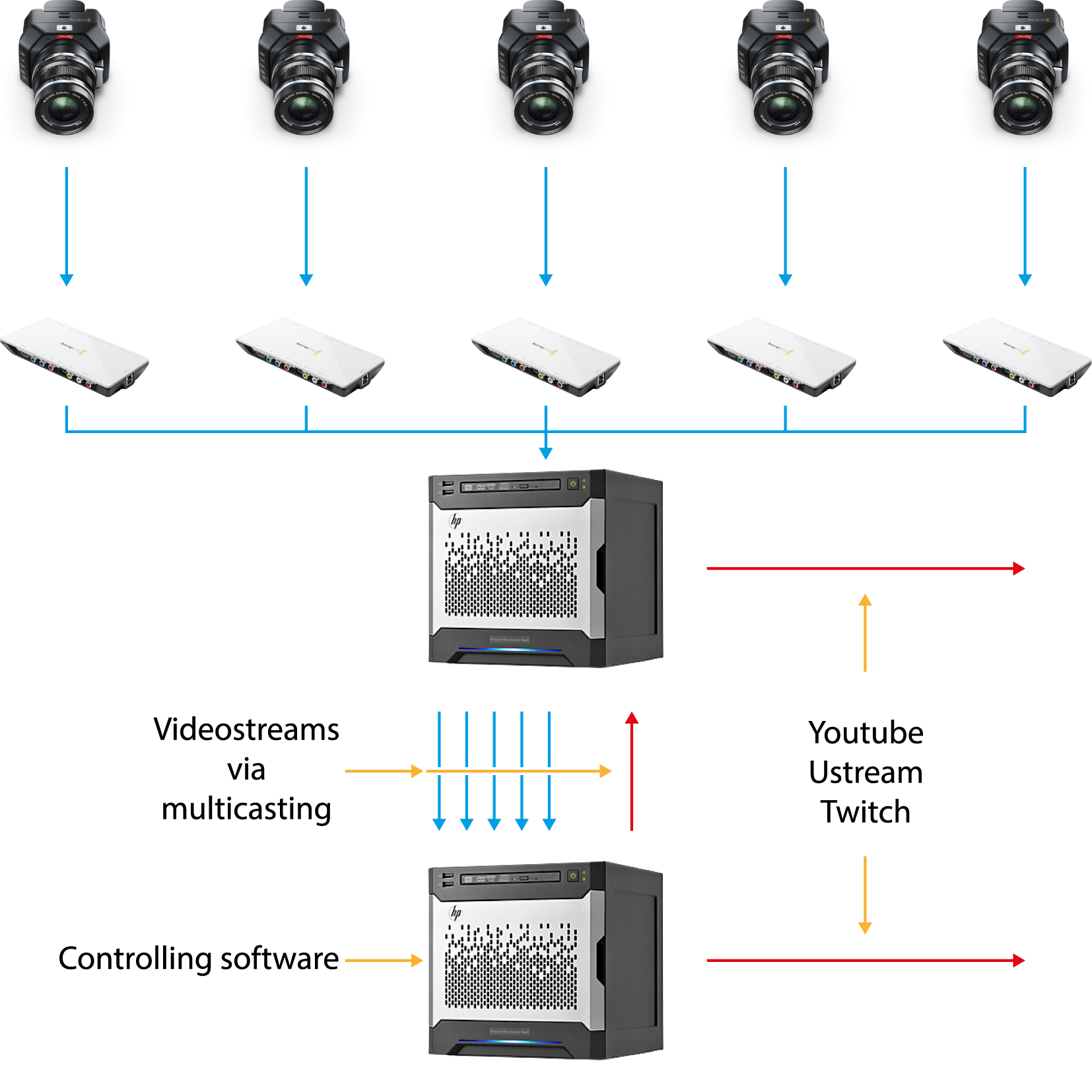So I have some experience with live production, but I want to do something a bit more complex and need some things cleared.
- This project would use multiple cameras (lets say 5), some non-camera sources (live PC display screengrab) and tons of graphics.
- There would probably be some 4-5 layouts, some of them would need to display multiple sources added to some graphical overlay. Some would be one camera at a time (with some live cut between cameras) and maybe some lower third or something over that.
- Entire thing would be live streamed online.
- Entire thing would be handled in HD (I imagine 1080p is no problem, am I wrong?)
I have used BMD ATEM plenty of times, but this seems to be over ATEMs capabilities (or am I wrong?).
I imagine there is some sort of switcher like ATEM, but with the ability to prepare layouts composed of multiple sources and graphics via some companion PC/mac software. To this switcher, camera sources would be connected via HDMI or SDI, and screengrab sources via some sort of HDMI splitter (between PC and it's display). This switcher would allow for switching between layouts and inside those layouts. It would also allow for switching between different graphics. Imagine there is small space for a sponsor banner and it would switch between three banners of different sponsors. Or there is point counter displaying one of multiple PNGs with a number.
Entire thing would then go from switcher to some encoder/streamer (like wirecast?) that would stream it to let's say YouTube.
To lower number of inputs needed on the main "super switcher", it would be possible to route 3 cameras to secondary switcher like simple ATEM and route that as single source to the main switcher, since signal from those cameras would be used only in one layout and only linear edited (no PIP).
My main questions:
- Is there such "super switcher" that would handle PIP and multiple graphics?
- Is there reliable streaming device, or do I need PC with BMD Intensity Shuttle (or similar) and some streaming software?
- And are there any contraptions I am not thinking about? Am I maybe thinking about this all wrong? Is there some "best" way to solve this scenario?
Thank you very much!

